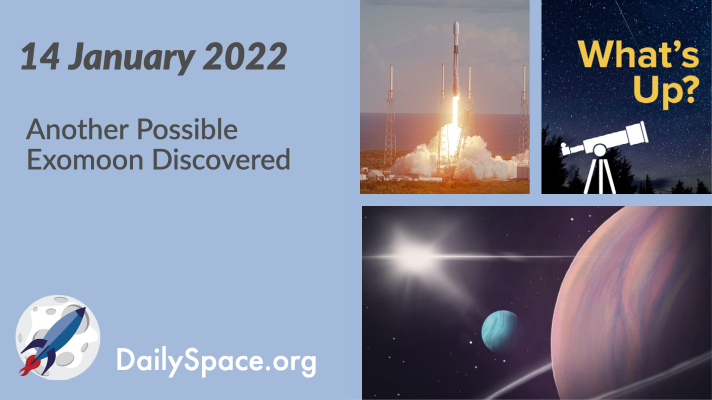
Jan 17, 2022 | Daily Space, Exoplanets, JWST, Mars, Rockets, Sky Watching, Space History, Spacecraft, SpaceX, Stars, Virgin Orbit, White Dwarfs
Researchers have potentially found a Neptune-sized exomoon orbiting a Jupiter-sized planet in a system with a Sun-like star, making it the second such potential exomoon discovered to date. Plus, rocket launches, This Week in Rocket History, and What’s Up.
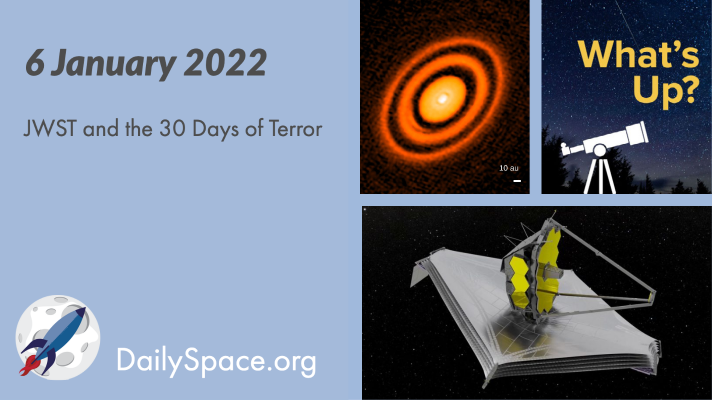
Jan 7, 2022 | Cassini, Daily Space, Earth, Globular Cluster, JWST, Our Solar System, Physics, Saturn, Sky Watching, Stars, Supernovae
With the successful launch of the JWST, the focus turns to the complicated process of unfurling the sunshield and unfolding the mirror. We’ll look at just where NASA is in the process and how much farther we have to go before first light. Plus, Earth and supernovae, and in this week’s What’s Up, we look forward to 2022’s astronomy events.
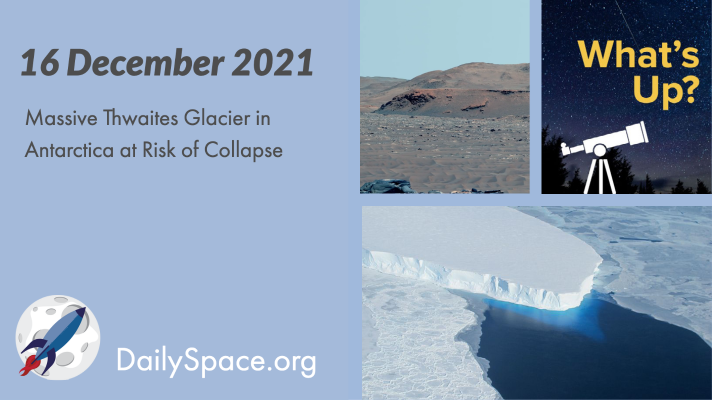
Dec 17, 2021 | AGU, Climate Change, Curiosity, Daily Space, Earth, Mars, Our Solar System, Perseverance, Rovers, Sky Watching, Star Forming Region, The Sun, Venus
A team of scientists collected cores and modeled ice cliff failure and found that Thwaites Glacier in Antarctica is melting more quickly than ever and could be at risk of collapse, threatening global coastlines with almost a meter of sea-level rise. Plus, new results from Percy, and this week’s What’s Up.
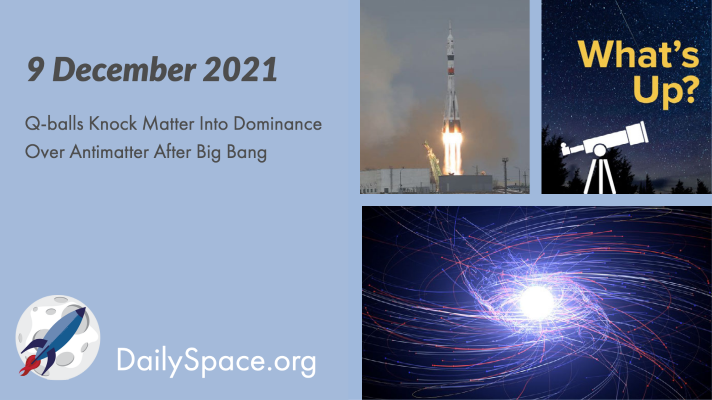
Dec 10, 2021 | Asteroids, Cosmology, Crewed Space, Daily Space, Exoplanets, Galaxies, Gemini South, Guest Interview, Rockets, ROSCOSMOS, Sky Watching, Soyuz, Spacecraft, Very Large Array
Researchers hypothesize that blobs in post-Big Bang fields of energy, known as Q-balls, could explain how matter came to dominate over antimatter in our Universe, and they plan to use gravitational waves to find their evidence. Plus, a crewed launch to the ISS features Japanese tourists, NASA selects the latest astronaut class, and What’s Up is the Geminids.

Dec 3, 2021 | Astrobiology, Comets, Daily Space, Earth, Galaxies, Sky Watching, Stars, Supermassive Black Holes
An analysis of over nine million samples of coccoliths whose ages span several million years has led scientists to conclude that changes in Earth’s orbit may have influenced changes in the size and shape of the microscopic algae. Plus, Europe contemplates geologic threats, and a comet is in this week’s What’s Up.
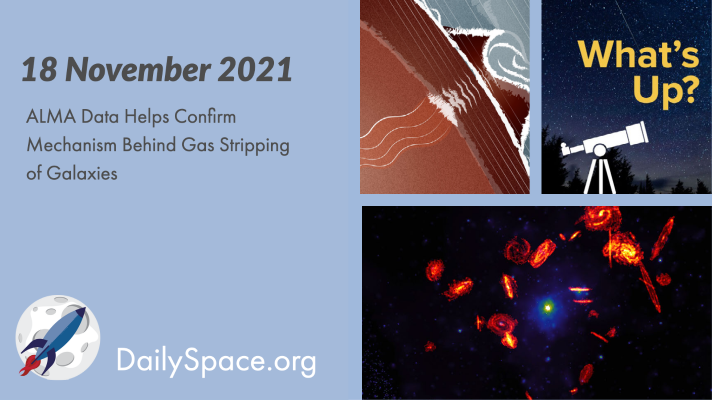
Nov 22, 2021 | Astrobiology, Daily Space, Earth, Galaxies, Mars, Moon, Sky Watching, The Sun
A new research project called the Virgo Environment Traced in Carbon Monoxide Survey (VERTICO) used data collected by the Atacama Large Millimeter/submillimeter Array (ALMA) to understand just what is stripping star-forming gases out of the Virgo Cluster of galaxies. Plus, calderas, a mass extinction, and this week’s What’s Up.








 We record most shows live, on Twitch. Follow us today to get alerts when we go live.
We record most shows live, on Twitch. Follow us today to get alerts when we go live.